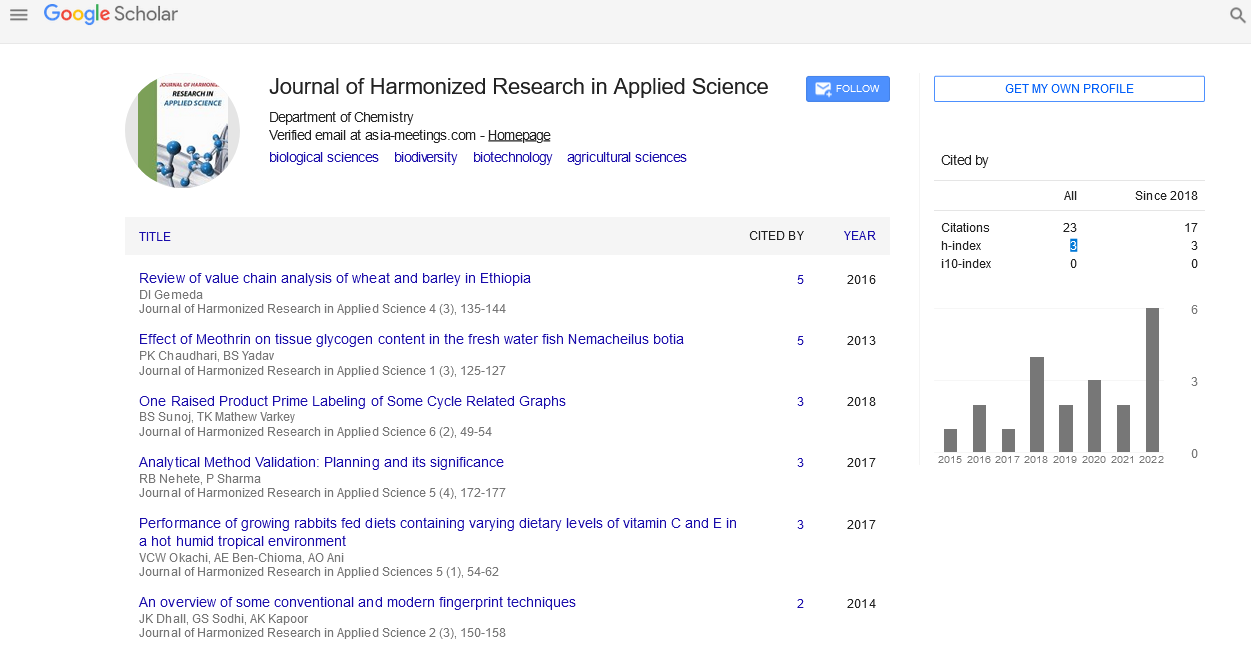ESTIMATIONS OF HERITABILITY AND CORRELATION COEFFICIENTS FOR GRAIN YIELD AND IT COMPONENTS IN MAIZE (Zea mays L.) UNDER DROUGHT CONDITIONS IN SAVANNA ZONES OF BORNO STATE, NIGERIA
Abstract
Author(s): D. Aminu, J. W. Wabekwa and A. S. Muhammad
Abstract A study was carried out to estimates the percentage of heritability and correlation coefficients of desirable maize agronomic traits under drought tolerance condition. Nine parental-lines (f ive males and four females) were crossed to generate twenty hybrids using a line x tester mating design. Twenty-nine entries consisting of twenty F1 hybrids plus nine parental lines were laid-out in a randomized complete block design (RCBD) with three replications, and were evaluated in two locations vis Biu and Damboa during the cropping season in 2009. The sowing was carried out in mid and end of August (15th-30th August) in Sudan and Northern Guinea savannas respectively in order to subject the entries to moisture stress. Evaluations were done to investigate broad-sense heritability and correlation coefficients between the traits and total grain yield. The results for combined locations showed higher heritability estimates of 62.37%, 65.29%, 60.09% and 65.37 for days to 50% tasseling, days to 50% silking, dehusked cobs and grain yield respectively. However, moderates heritability estimates of 53.84%, 51.28%, 54.73%, 54.04% and 57.75% for number of stands per plot, anthesis silking interval, plant height, weight of cobs and 100 seed weight respectively were observed. Higher and relatively moderate broad-sense heritability of the traits revealed that variations were transmissible and potential for developing high yielding varieties through selection of desirable plants in succeeding generations exist. Correlation coefficients analysis revealed that days to 50% tasseling (r = 0.3677), number of cobs per plant (r = 0.5646), number of cobs per plot (r = 0.4992), weight of cobs (r = 0.3757g, r = 0.3616p and r = 0.7727e), dehusked cobs (r = 0.3746p and 0.7884e) and 100 seed weight (r = 0.3767) showed positive and significant genotypic (g), phenotypic (p) and environmental (e) correlation with grain yield except number of stands per plot and ear height which were negatively correlated with grain yield. The magnitude of genotypic correlations were higher than those in phenotypic and environmental correlation coefficients to grain yield, which means that selection for these traits will improve grain yield. The study also observed that correlations as well as heritability were suitable as models for yield improvement and selection for drought tolerant genotypes. Key Words: Correlation, drought, heritability, maize, traits and savanna.










